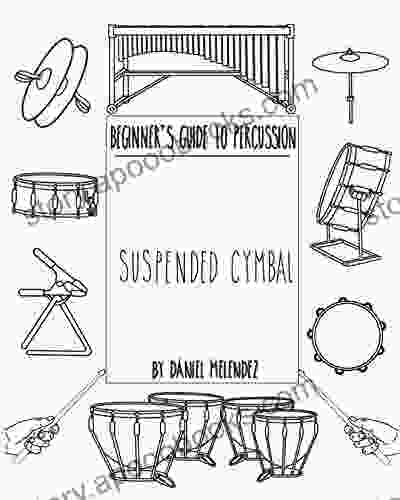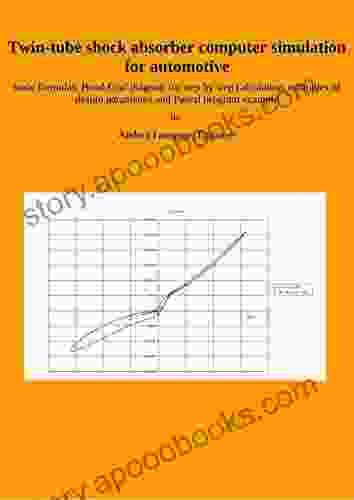Unlock the Secrets of Bond Graph Diagrams: A Comprehensive Guide to Step-by-Step Calculations

In the dynamic realm of engineering systems, bond graph diagrams provide a powerful tool for modeling and analyzing complex physical processes. These diagrams offer a graphical representation that seamlessly connects system components, energy flows, and interactions, enabling engineers to visualize and understand the behavior of intricate systems.
What is a Bond Graph Diagram?
A bond graph diagram, also known as a bond graph, is a graphical representation of an engineering system that depicts the flow of energy and power between its components. It is based on the principles of thermodynamics and power flow analysis.
4.9 out of 5
| Language | : | English |
| File size | : | 3895 KB |
| Text-to-Speech | : | Enabled |
| Screen Reader | : | Supported |
| Enhanced typesetting | : | Enabled |
| Print length | : | 72 pages |
| Lending | : | Enabled |
Components within a bond graph are represented by nodes, while the connections between them are depicted by lines known as bonds. Each bond has an associated effort (voltage, force, etc.) and a flow (current, displacement, etc.).
Advantages of Bond Graph Diagrams
Bond graph diagrams offer numerous advantages, including:
*
- Visual representation: They provide a clear and intuitive way to visualize the energy flow within a system, making it easier to understand the system's behavior.
- Versatility: Bond graphs can be used to model a wide variety of engineering systems, including mechanical, electrical, thermal, and hydraulic systems.
- Decomposition: Diagrams facilitate the decomposition of a complex system into smaller subsystems, allowing for a modular approach to analysis.
- Multidisciplinary approach: They enable engineers from different disciplines to work on the same system, fostering a deeper understanding and collaboration.
Basic Formulas for Bond Graph Diagrams
The fundamental concepts of bond graph diagrams are grounded in a set of basic formulas that govern the behavior of components and energy flows. These formulas include:
*
- Effort-flow relationship: Each bond represents an effort-flow pair, such as voltage and current in electrical systems or force and velocity in mechanical systems.
- Junction equations: These equations describe the conservation of energy at junctions where multiple bonds connect.
- Causality assignment: Bonds are assigned a causality, either effort or flow, to determine the direction of energy flow.
- Modulation: Diagrams can incorporate modulation elements to represent the manipulation or control of energy flows within the system.
Step-by-Step Calculation Examples
To illustrate the practical application of bond graph diagrams, let's consider a simple example:
Mechanical System
Consider a mechanical system consisting of a mass, a spring, and a damper. We can represent this system using a bond graph as shown below:
[Image of a bond graph diagram for a mechanical system with a mass, a spring, and a damper]
Using the basic formulas for bond graph diagrams, we can calculate the system's response to an applied force. The step-by-step calculations are as follows:
* Assign causality to the bonds: Effort to the spring bond and flow to the mass and damper bonds. * Write junction equations: Summing the flows at the mass and damper junctions results in the equations:
- m * dV/dt = -k * x - b * V
- C * dP/dt = -k * x - b * V
* Solve the equations: Using Laplace transforms, we can solve these equations to obtain the system's response:
- V(s) = F(s) / (m * s^2 + b * s + k)
- P(s) = F(s) * s / (m * s^2 + b * s + k)
These calculations provide insights into the system's dynamics, such as its natural frequency and damping ratio.
Applications of Bond Graph Diagrams
Bond graph diagrams are widely used in various engineering domains, including:
*
- Mechanical engineering: Modeling and analysis of mechanical systems such as robotic arms, vehicles, and engines.
- Electrical engineering: Design and simulation of electrical circuits, power systems, and control systems.
- Hydraulic engineering: Analysis of fluid systems, including pumps, valves, and piping networks.
- Thermodynamics: Modeling and optimization of thermal systems such as heat exchangers and refrigeration systems.
- Aerospace engineering: Simulation of aircraft flight dynamics, spacecraft control systems, and engine performance.
Bond graph diagrams offer a powerful and versatile tool for engineers to visualize, analyze, and design complex systems. By understanding the basic formulas and working through step-by-step calculation examples, engineers can harness the full potential of these diagrams to gain a deeper understanding of system dynamics and optimize their performance.
Whether you are a seasoned engineer or a student just starting to explore the world of systems modeling, this comprehensive guide provides a solid foundation for your journey into the fascinating realm of bond graph diagrams.
4.9 out of 5
| Language | : | English |
| File size | : | 3895 KB |
| Text-to-Speech | : | Enabled |
| Screen Reader | : | Supported |
| Enhanced typesetting | : | Enabled |
| Print length | : | 72 pages |
| Lending | : | Enabled |
Do you want to contribute by writing guest posts on this blog?
Please contact us and send us a resume of previous articles that you have written.
 Book
Book Novel
Novel Page
Page Chapter
Chapter Text
Text Story
Story Genre
Genre Reader
Reader Library
Library Paperback
Paperback E-book
E-book Magazine
Magazine Newspaper
Newspaper Paragraph
Paragraph Sentence
Sentence Bookmark
Bookmark Shelf
Shelf Glossary
Glossary Bibliography
Bibliography Foreword
Foreword Preface
Preface Synopsis
Synopsis Annotation
Annotation Footnote
Footnote Manuscript
Manuscript Scroll
Scroll Codex
Codex Tome
Tome Bestseller
Bestseller Classics
Classics Library card
Library card Narrative
Narrative Biography
Biography Autobiography
Autobiography Memoir
Memoir Reference
Reference Encyclopedia
Encyclopedia Mary Beth Temple
Mary Beth Temple Omar Prakash
Omar Prakash Leanne Kang
Leanne Kang Terry Stavridis
Terry Stavridis Zerlina Maxwell
Zerlina Maxwell Sophia Hall
Sophia Hall Ralph Nader
Ralph Nader Linda Melvern
Linda Melvern Richard M Flanagan
Richard M Flanagan Sally Robinson
Sally Robinson Michael S Jeffress
Michael S Jeffress Sylvia Mercedes
Sylvia Mercedes Nils Petter Gleditsch
Nils Petter Gleditsch Tanya Markul
Tanya Markul William Parrett
William Parrett Marcos Pizarro
Marcos Pizarro Rough Guides
Rough Guides Ralph Jackman
Ralph Jackman Faith Johnson
Faith Johnson Thomas Seroogy
Thomas Seroogy
Light bulbAdvertise smarter! Our strategic ad space ensures maximum exposure. Reserve your spot today!
 José SaramagoFollow ·17.5k
José SaramagoFollow ·17.5k Jamison CoxFollow ·9.2k
Jamison CoxFollow ·9.2k Esteban CoxFollow ·9.2k
Esteban CoxFollow ·9.2k Jonathan HayesFollow ·8.1k
Jonathan HayesFollow ·8.1k Jaden CoxFollow ·3.5k
Jaden CoxFollow ·3.5k Jan MitchellFollow ·7.6k
Jan MitchellFollow ·7.6k Wesley ReedFollow ·9.3k
Wesley ReedFollow ·9.3k Yasunari KawabataFollow ·10k
Yasunari KawabataFollow ·10k

 Jorge Luis Borges
Jorge Luis BorgesUnlock Your Inner Musician: The Ultimate Guide to...
Embark on a Musical...

 Carlos Drummond
Carlos DrummondQuick Reference Guide To Percussion Instruments And How...
Unleash your inner rhythm with...

 Roberto Bolaño
Roberto BolañoUnlock Your Guitar Potential: The Ultimate Guitar Mastery...
Are you ready...

 Fred Foster
Fred FosterLooking for Lady Dee: A Punk Rock Mystery
By [Author's Name] Looking for Lady Dee is...

 Jacques Bell
Jacques BellJourney into the Mystical Realm of "Heaven Polly Alice...
In the tapestry of literature, where...

 Julio Ramón Ribeyro
Julio Ramón RibeyroSixty Years of Hits: A Musical Journey Through Time
Music has the...
4.9 out of 5
| Language | : | English |
| File size | : | 3895 KB |
| Text-to-Speech | : | Enabled |
| Screen Reader | : | Supported |
| Enhanced typesetting | : | Enabled |
| Print length | : | 72 pages |
| Lending | : | Enabled |












